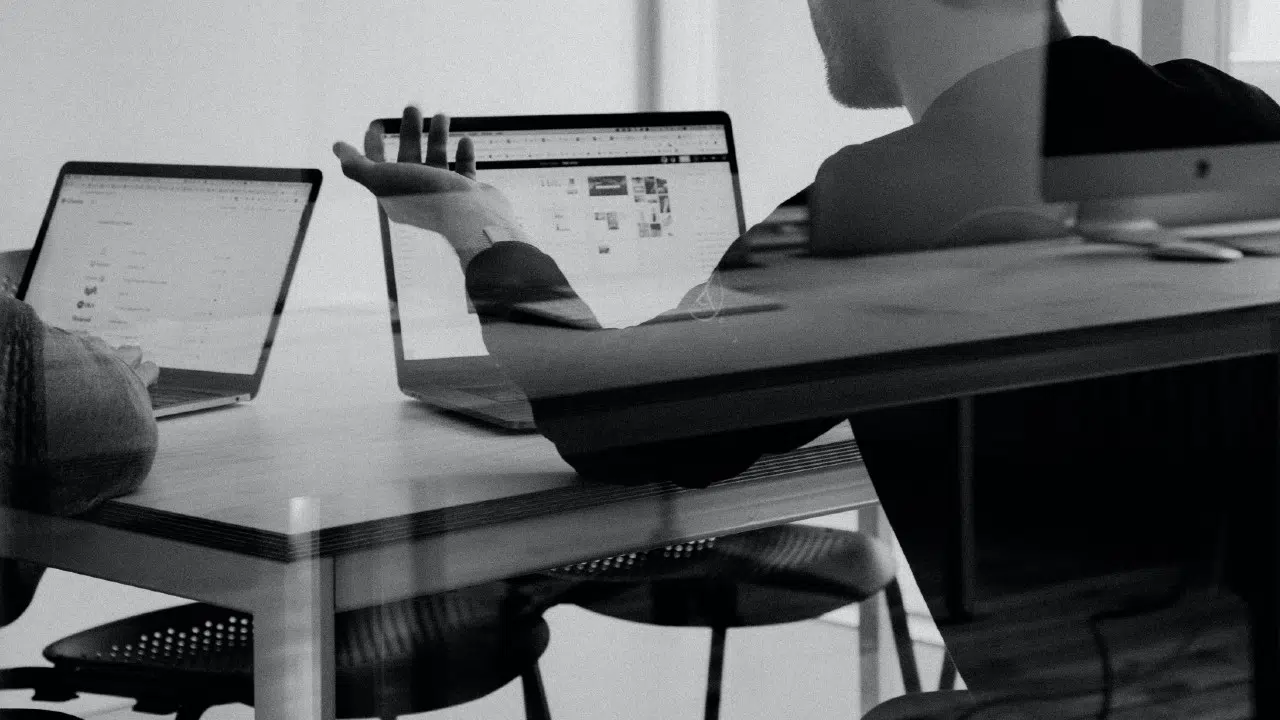
Stage 4 Lockdown – 3 Pivot Ideas For Your Business & How To Go About it
Joel: Hello, everyone. Hope you’re coping all right during this new phase of stage 4 lockdowns in Victoria, as well as others around Australia who are facing the impact of the current pandemic.
Raph and I thought that it’s worthwhile sharing with you some insights and strategies that we’ve seen work well for some of our clients during this time, and hopefully you can implement them in your own businesses and as a result, survive, and perhaps even thrive during these tough times.
So one of the things that you’ve probably seen people talk about during this time is this idea of pivoting. People are throwing that word around.
But the question is, what does that actually mean?
We hear this word, but practically, what does it mean? How do you do it? How does it apply in your own business?
And so we’d like to share a few different examples of what that might look like.
So, at the very extreme, when people hear the word pivot, it means changing businesses entirely.
And for most of our clients, that’s not what we mean when we use the word pivot, there are some clients, perhaps if they’re in travel industry, or perhaps some people in entertainment, who are not able to function at all in the current incarnation of their business. They may need to totally pivot and look at a different form of business altogether.
But for most people, they’re able to operate in some capacity and if you think creatively in an innovative way, there may be other ways to pivot to enable the business to continue on, and as I said, perhaps even thrive during these times.
I’d like to share some specific examples with you.
Table of Contents
Pivot to a new product or service offering
Joel: So one example is that you can offer a new service or product offering, one that your business had not offered up until this point.
Raph, do you wanna share some examples of that?
Raph: Yes. So in terms of offering a new service or new product, it doesn’t necessarily mean starting a new business – you have to think about what new products you can get or new services you can create; it’s about sort of repackaging what you already have.
So, for example, we’ve worked with commercial food business clients, and they’ve got chefs, they’ve got people that create the food and the service and offer the product.
But how could they repackage that if offices are closing down, and businesses are not operating? So what they were able to do is actually launch more of a home delivery food service, delivering specifically themed foods to people’s homes with the same high-quality levels that they had offering to the commercial clients.
So that was a great way, and they’ve actually made it a real ongoing aspect of their business, where there’s themes changed up weekly or every couple of weeks, which hopefully help them even when their business goes back to normal, it might be a new division of their business.
We’ve also seen in allied health, where people have been able to think, “Okay, well, I’ve got this skill set in this area, so maybe I can launch this type of niche service or niche product.”
There’s almost always a niche that you can fulfil in this day and age. So that’s a couple of examples where people have actually launch a new division of their service or product.
Pivot online
Raph: But there’s also transitioning online. Do you want to talk about that a little bit?
Joel: Yeah, sure. So, at one level, this is an obvious one, but if you haven’t made this change yet, it could be a really powerful one.
And that is, if you have been purely a face-to-face service, then moving to an online-based service can be a powerful way of enabling you to continue operations and grow.
You may have seen some industries do this very, very quickly and nimbly, psychologists, for example, were delivering face-to-face services, and have almost universally gone online very, very simply and easily.
But that’s not the only example: clients in the corporate training space who were doing face-to-face workshops and now have created an online program, online courses, online offerings.
Raph: Virtual training, remote training, which is actually, I think, very innovative, because you’ve got lots of people sitting at home thinking about, “Well, how can I increase my skills? How can I at least use this time productively?” While someone at home might be going from full-time to part-time, “So can I train? Can I learn something new so that when the workforce opens up again, I’m more skilled out of it?”
Joel: Correct. And even with, for example, allied health, where there are some kinds of allied health businesses where typically in people’s minds, they think it requires someone to physically be there, because it might require some sort of physical manipulation.
There are often still services or aspects of services that can be done face-to-face. For example, initial diagnostic sessions can be done face-to-face, consultations of various clients can be done face-to-face.
Yes, there may be some services that cannot be done in this period of time, but there’s often a lot that can be done for people that is genuinely helpful online. So I want to encourage people to think creatively about how they might make that work.
Pivot interstate or overseas
Joel: The other kind of pivot that we’ve seen people engage in is keeping their current form of business offering, but taking it interstate.
So for example, people in Victoria right now with the stage 4 lockdowns are quite limited, but in New South Wales and in Queensland and other states, they may not be as limited, so literally picking up their service and moving it to those states can be a powerful strategy.
And we’ve seen a number of our clients do that.
Raph: Yeah, so I was gonna say that even before the stage 4 restrictions, some of the clients that we work with, already got a bit of a sense that this could happen.
So they’re already putting plans into place, like speaking to contractors in other states, Sydney, Brisbane, to set up there. Some had even started a few months ago – and they’re able to actually make the move within the next week or two, because they’ve already put some of the groundwork in place.
And also part of the thinking of this is that you might be able to create relationships with people in those other areas, and they may be able to deliver the service for you.
You might not be making as much money, but if you deliver a service there, it’s better than making nothing in Victoria, where you might not be able to deliver any services. So, it could just be about minimising the damage so to speak, with the lockdowns.
For example, we’ve seen logistics companies move into state fairly quickly, repair type service companies, where you’ve got contracts, people still need things in their house, machinery.
Even at the commercial level, you still got warehouses and industrial factories still needing to operate and produce and manufacture things. So companies like that still need to provide their product, their service.
Just recently, we also had a client that just took their offering international. So Australia is a market, but they also have the capability, the partnerships, to go overseas and nearby areas.
Just to go back to going online, one of the corporate training companies, they’re now able to pivot to New Zealand, so they’re using the online version, but also going international testing out the areas there.
So, I’d say that’s one of the biggest areas that you’ve been able to not put all your eggs all in one basket, and think about other states and regions.
Test your ideas fast
Joel: And maybe we’ll just finish by saying that during this time, on one hand, it’s the best and the worst time to engage in this. On one hand, yes, it’s a tough time. And it may seem hard on one hand to invest in making these sorts of changes. At the same time, it’s the best time to experiment with these sorts of things, and invest in the future.
And for some businesses, these lines will actually be profitable ongoing lines of business and expanding their business into the future, even after the pandemic or this phase of the pandemic is over.
And one of the lovely things is, it’s really easy to test this stuff. There are some really fast, quick ways to test it through, things like Google Ads and Facebook – they’re almost instantaneous. You can literally just pick up what you’re doing, put in place a Facebook campaign or a Google Ads campaign in another state, for example, or through your online offering, and test it out in the market.
And within a couple of months, you can really have some great data and feedback about the return on investment.
Raph: Yeah, if I can just add to that, over the years, I’ve spoken to many different businesses about that. My father was a bit of an entrepreneur. But when he wanted to launch a new business idea that he had, he had to invest in thousands of dollars or tens of thousands of dollars in product development and sourcing it, and then renting a location and then trying to, he’d spend hundreds of thousands of dollars before launching any new business, and then afterwards it might not work out.
Whereas we’ve actually worked with clients before that have said, “Look, I’ve got this idea, can you do some research?” So we use the tools, we see if there’s a market for it in other areas or in their area.
With a fairly simple website and a marketing strategy, you can launch, and you don’t have to necessarily rent a shop or hire staff, you can use the existing infrastructure that you have in place to offer that.
The results, the instantaneous of getting feedback and results, it can be within weeks or it can be within a couple of months. You don’t have to spend so much time and money to launch new areas of your business if you don’t have to.
One specific case was a client who wanted to test a new area, and then literally within the first week, they said, “Okay, Melbourne is going really well, let’s go wider than Melbourne.” And they went nationally.
Within two weeks of actually launching this business idea, they’re already engaging with a call centre to handle the flow of how busy things were getting.
So it just shows; it’s not gonna work for everybody, and we can’t predict who it’s going to work for best, but there are ways that you can test things out much faster than what you could have done in previous generations or eras.
Invest in your brand
Joel: Thank you. And maybe I’ll end with one final point, and that is: even if you’re a business that you don’t feel can pivot in a significant or meaningful way right now, then I wouldn’t give up on investing in building your brand and building a foundation for the future.
And therefore, investing in things like developing content for your website and putting that content out there, whether it’s blog articles, videos, informative white papers and guides and other things that give people value, enable them to build trust, it’s a really great time to do that now.
And what it does is, even if that may not result in massive growth at this point in time, what it does is, it starts to build your brand, your name for when things change, and the restrictions start to ease, and you can really hit the ground running.
Investing in things like SEO, for example, search engine optimisation is more of a medium to long-term strategy, but you need to invest now to have an effect in three months or six months time.
So have a think about some of those strategies. And we really hope that these ideas and examples have been helpful to you.
And if you have any question about how it might apply to your specific business and operation, then reach out to us, we’re really happy to help.
Wishing you all the best during this tough time.
Raph: Okay, thank you, all the best.




